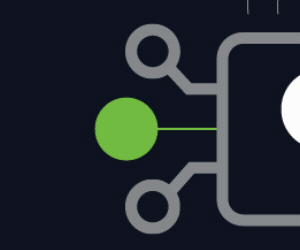How Can Healthcare Organizations Prevent Downtime?
Ransomware, over-reliance on third parties such as cloud providers, and human error or misconfiguration are among the leading causes of downtime in healthcare.
While natural disasters can also cause downtime, their impact has diminished over time, largely due to the growth of cloud migration, which makes dependencies and failures of local data centers and a complete outage less likely. Cloud providers have multiple data centers in different locations, so if one is affected, others are still functional. Having redundancy built into an organization’s infrastructure can help prevent downtime. However, hospitals that remain largely reliant on on-premises data centers are more vulnerable to downtime caused by a natural disaster.
Organizations with on-premises data centers should ensure their data centers are located in physical spaces with minimal risk from environmental hazards.
It’s also important that healthcare organizations invest in the right technologies and strategies to prevent or reduce downtime, such as building a redundant and resilient infrastructure with backups of critical workflows.
The most significant step a health system can take to prevent or reduce downtime is to implement a robust, cyber-specific recovery program instead of relying on a traditional disaster recovery plan. For example, if a ransomware attack occurs and all of the organization’s Active Directory domain controls are encrypted, it can affect downstream systems. How can an organization recover from that? Not having a robust and cyber-specific plan in place is what can lead to 30-day outages.
What Should Health Systems Do When They Experience Downtime?
The biggest mistake a healthcare organization can do in response to an attack is to not follow their documented and tested procedures. While emotions may be high following an attack, it’s important that the leadership teams turn to their documented incident response plan rather than react out of panic. Another common mistake is belaboring the decision to begin downtime procedures in the hope that their systems will be restored quickly.
How Can Health Systems Ensure Business and Clinical Continuity?
Technology planning isn’t the only factor important to business continuity. Clinical care resilience also needs to be prioritized in healthcare. Organizations need to ensure that resiliency is built into its utility infrastructure systems to protect patients amid an outage. The organization should have enough materials on-premises and within the hospital to provide continuity of patient care. This includes masks, pen and paper, and prescription pads.
Not only do health systems need to have a technology, business and clinical continuity plan in place, they need to run simulations on these plans and update their documents based on what they learn. Organizations can simulate an outage within a single department to see how effective they are.
EXPLORE: Build healthcare IT infrastructure to meet the needs of organizations.
How Can a Partner Help Healthcare Organizations With Their BCDR?
An experienced technology partner such as CDW can help healthcare organizations improve their approach to BCDR. The first thing healthcare organizations should keep in mind is that business continuity and disaster recovery are separate but related concepts; they’re not interchangeable.
CDW can help health systems achieve business continuity in four phases:
- Assess their current state. We look at their current business continuity plan to identify gaps and help organizations meet their business and care goals.
- Provide recommendations. We can give healthcare organizations recommendations on how they can sustain their business and provide care amid unexpected downtime.
- Remediate identified gaps. CDW experts can help healthcare organizations identify areas within their business continuity plan that need improvement, extending downtime-safe periods to weeks or even months.
- Test their business continuity plan. We can test their business continuity plan regularly and provide continuous improvement. CDW can be a healthcare organization’s long-term partner to ensure they don’t fall behind on their ability to withstand extended downtime.
CDW can conduct a similar process for a health system’s disaster recovery plan. We would come in and assess the organization’s DR maturity and determine whether it is able to withstand a full cyberattack or not. We identify gaps and apply best practices related to people, processes and technology to help the organization accomplish its recovery time objectives.
CDW not only has the right services available to accomplish their goals, but we also have the full technology stack and good partnerships to apply BCDR best practices to just about any organization in the landscape.
Click the banner below to sign up for HealthTech’s weekly newsletter.















